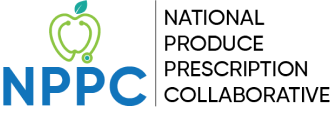Healthy eating reduces risk for chronic disease, but can be out of reach for many Americans experiencing food insecurity. Produce Prescription Programs (PPPs) have emerged as an intervention to address barriers related to fruit and vegetable consumption. Using a social prescribing model, PPPs connect patients with referrals to community resources to reduce barriers to healthy eating. There is evidence of success of PPPs at improving dietary intake, yet little discussion within the literature of practical aspects of implementation. As interest grows around establishing PPPs within communities, increased attention to strategic planning and implementation remains necessary to develop robust and effective programming. We describe implementing the Pontiac Prescription for Health pilot program, highlighting the participatory planning process with partners. Development and implementation included a program model, recruitment methods and materials, a voucher contract and tracking system with produce vendors, physical activity opportunities, culturally competent health education sessions, and evaluation tools. We offer insight into lessons learned and practical implications for future “on-the-ground” planning and implementation. Engaging in a rigorous participatory planning process with all community partners, allowing adequate time to establish service agreements and a voucher system with vendors, and engaging program participants in different ways and spaces throughout the community can enhance program success.
Read The Full Article at Health Promotion Practice






